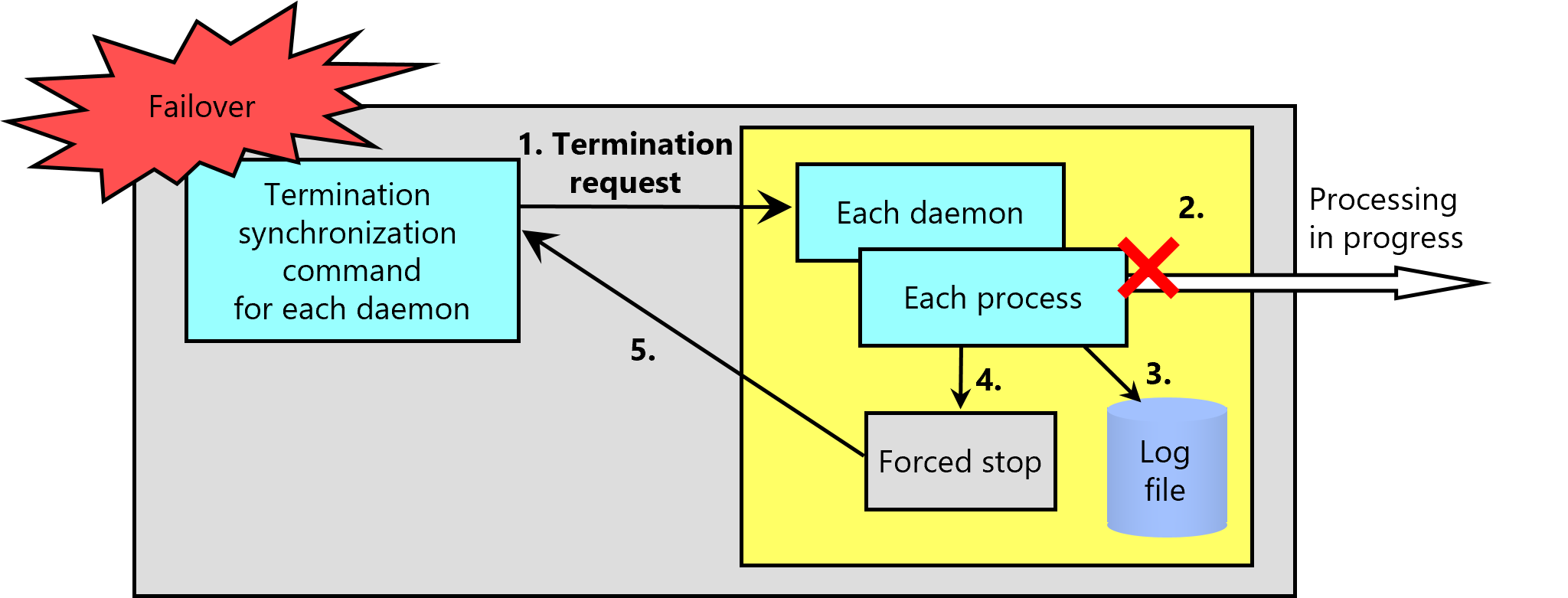Forced stop mode
Instead of waiting for the completion of the processing, this mode immediately and forcibly terminates processes and daemons.
The flow of the daemon termination processing in Forced Stop mode is explained in Figure 2.7 .
1) Running of the termination synchronization command
Each daemon's termination synchronization command issues a termination request to the corresponding daemon.
2) Forced stop of each process
When a daemon termination request is acknowledged, even if a process is currently running, it is forcibly terminated.
3) Recording of log information
When a process acknowledges the forced stop request, it writes the processing result to a log file. The processing result shows an unsuccessful termination due to a forced stop request.
If a process is terminated unsuccessfully due to a forced stop request, the status code of each process in the log file is as follows:
-
When the Send daemon is forcibly stopped, 590.
-
When the Receive daemon is forcibly stopped, 591.
-
When the Observe daemon is forcibly stopped, 592.
For details, refer to the following:
HULFT10 for Linux/AIX Error Codes and Messages :
4) Forced stop of processes and daemons
After all processes stop, the daemon is then forcibly stopped.
5) Notification of daemon termination
After the daemon is terminated, the daemon termination synchronization command is notified of the result.
For a daemon (waiting for the process to end) that received a termination request in Forced Stop mode, if a termination request is also issued in Process Synchronization mode, the daemon will terminate in Forced Stop mode.
Even if the Unsuccessful Job is set for the transfer that terminated unsuccessfully due to a forced termination request, the job will not be executed. However, the Unsuccessful Job on the remote host will be executed.
